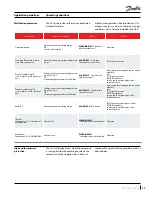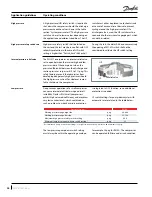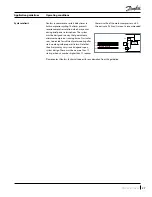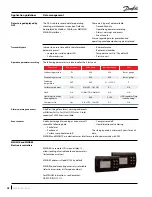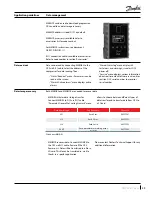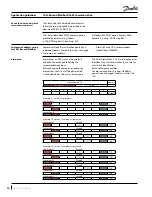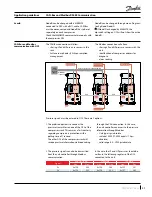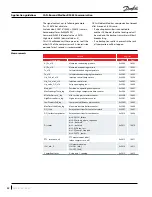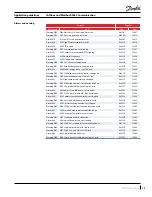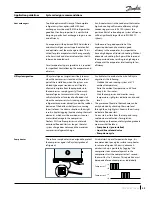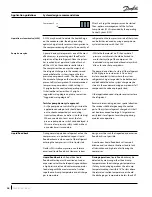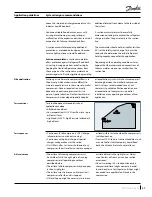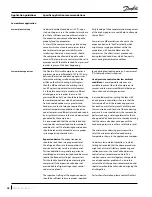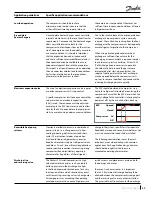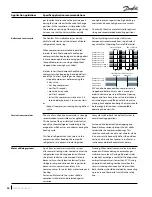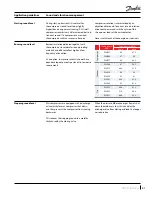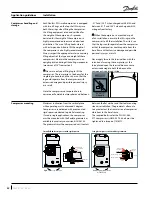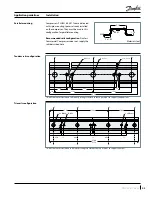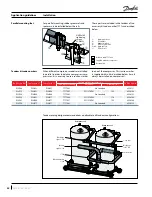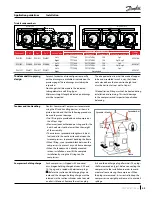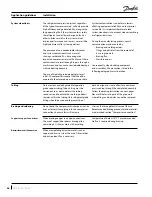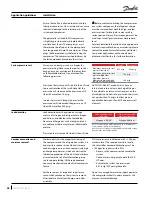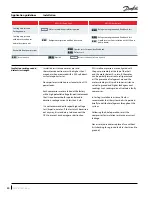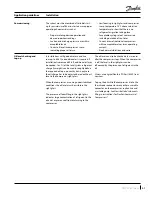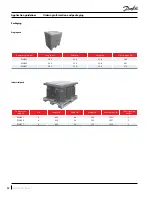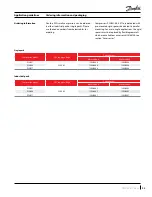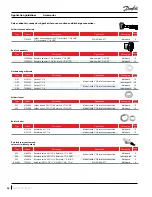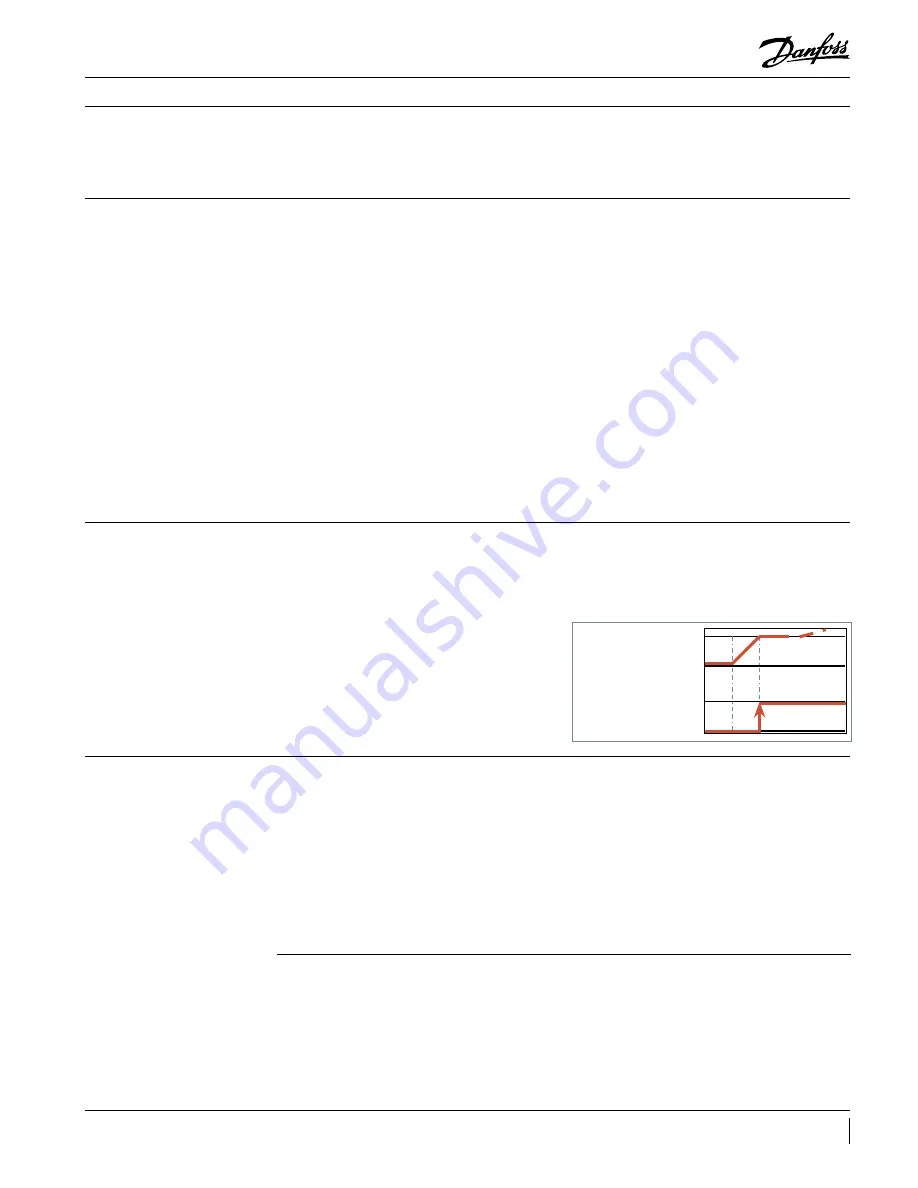
Application guidelines
39
FRCC.PC.021.A5.22
Specific application recommendations
Brazed plate
heat exchangers
Electronic expansion valve
A brazed plate heat exchanger needs very little
internal volume to satisfy the set of heat transfer
requirements. Consequently, the heat exchanger
offers very little internal volume for the
compressor to draw vapour from on the suction
side. The compressor can then quickly enter into
a vacuum condition. It is therefore important
that the expansion device be sized correctly
and that a sufficient pressure differential across
the expansion device be available to ensure
adequate refrigerant feed into the evaporator.
This aspect is of special concern when operating
the unit under low ambient and load conditions.
For further information on these conditions,
please refer to the previous sections.
Due to the small volume of the brazed plate heat
exchanger, no pump-down cycle is normally
required. The suction line running from the heat
exchanger to the compressor must be trapped to
avoid refrigerant migration to the compressor.
When using a brazed plate condenser heat
exchanger, a sufficient free volume for the
discharge gas to accumulate is required in order
to avoid excess pressure build-up. At least 3.28
ft of discharge line are necessary to generate
this volume. To help reduce the gas volume
immediately after start-up even further, the
supply of cooling water to the heat exchanger
may be opened before the compressor starts
up so as to remove superheat and condense the
incoming discharge gas more quickly.
Reversible heat pump
systems
Transients are likely to occur in reversible heat
pump systems, i.e. a changeover cycle from
cooling to heating, defrost or low-load short
cycles. These transient modes of operation
may lead to liquid refrigerant carry-over (or
flood back) or excessively wet refrigerant return
conditions. As such, reversible cycle applications
require specific precautions for ensuring a long
compressor life and satisfactory operating
characteristics. Regardless of the refrigerant
charge in the system, specific tests for repetitive
flood back are required to confirm whether or not
a suction accumulator needs to be installed.
The following considerations cover the most
important issues when dealing with common
applications. Each application design however
should be thoroughly tested to ensure
acceptable operating characteristics.
Low load operation
The compressors should be run for a
minimum period in order to ensure that the
oil has sufficient time to properly return to
the compressor sump and that the motor has
sufficient time to cool under conditions of lowest
refrigerant mass flows.
The use of an electronic expansion valve requires
a specific compressor start / stop control.
A specific compressor start sequence control has
to be set when an electronic expansion valve
(EXV) is used. The sequence must be adjusted
according to the EXV step motor speed to allow
time for the EXV to open before the compressor
starts to avoid running under vacuum conditions.
The EXV should be closed at compressor stop
not to let refrigerant in liquid phase entering the
compressor. Ensure that the EXV closes when the
supply voltage to the controller is interrupted (ie
power cut off) by the use of a battery back up.
EXV Opened
Closed
Compressor On
Off
Discharge line
and reversing valve
The Danfoss PSH scroll compressor is a high
volumetric machine and, as such, can rapidly
build up pressure in the discharge line if gas
in the line becomes obstructed even for a very
short period of time which situation may occur
with slow-acting, reversing valves in heat pumps.
Discharge pressures exceeding the operating
envelope may result in nuisance high-pressure
switch cutouts and place excess strain on both
the bearings and motor.
To prevent such occurrences, it is important
that a 3.2 ft minimum discharge line length be
allowed between the compressor discharge port
and the reversing valve or any other restriction.
This gives sufficient free volume for the discharge

